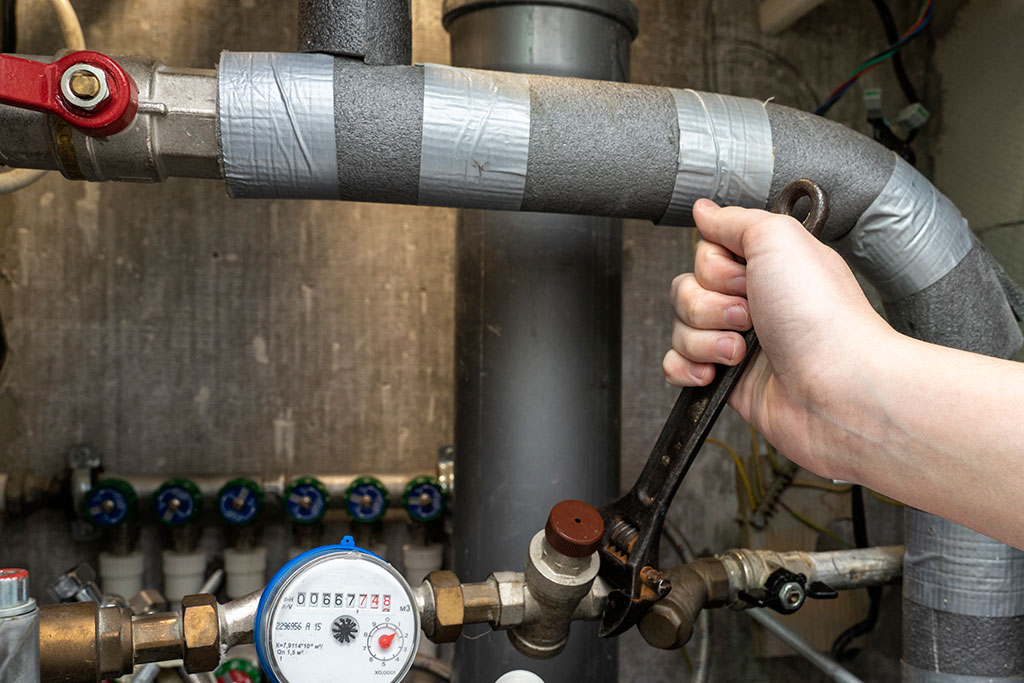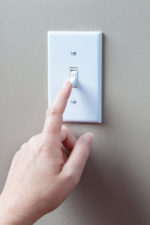10 Things to Know about Your New House
There’s nothing like getting the keys to your new home. You can already picture the dinner parties you’ll host, the garden you’ll plant, and the pancakes you’ll flip in the kitchen.
Even that country-kitsch wallpaper border from the 1980s can’t dampen your excitement.
But before you dive into the fun stuff, take some time to get acquainted with how your new property operates. The more you know, the less caught off guard you’ll be when problems arise and the faster you can return to the finer things in life.
Water shutoff valve
In a plumbing emergency, you’ll want to know how to quickly find this valve and turn it off; burst pipes and major leaks will require a speedy response to prevent damage to your house. Check for it in the basement first or near your hot water tank if you don’t have a basement. If you’re planning to be away from your home for an extended period, turn off this main valve to minimize the risk of plumbing issues while you’re gone. It’s also a good idea to do so when fixing or replacing faucets or toilets.

Gas shutoff valve
If your appliances are supplied by natural gas, it’s crucial that you know where your main gas supply is located. In a single-family house, you can usually find it on the side or back of the house, just before the gas meter. Gas leaks can be dangerous and even fatal, so time is of the essence. Once you’ve turned off the valve, call the gas company or fire department from across the street.
Electrical panel
When you are in the middle of drying your hair while your partner vacuums and you’re both suddenly plunged into darkness, you are going to want to know where that circuit breaker is. Check your panel now to see if the circuits are accurately labeled according to what room of the house they are attached to. This will save you a lot of time and frustration in the future.
Appliances
Look over your various appliances and their manuals to make sure they’re in good shape and you know how to use them, especially if you are inheriting appliances as they may need servicing sooner. For your refrigerator, ensure the condenser coils are clean and free of dust. Dishwashers often have a filter at the bottom that should be cleaned regularly, anywhere from every two weeks to once a year depending on how often you do dishes and whether you scrape or rinse before loading. And, in addition to clearing your dryer’s lint trap after every use, you should thoroughly inspect and clean out your dryer vent from end to end at least once a year.

Light fixtures
It can be incredibly annoying when a light burns out and you don’t have the right bulb to replace it. If you have recessed lighting or fixtures that require nonstandard bulbs, take a few minutes to go around the house and note the specification requirements of each. Once you have those details, you can stock up with a shelf of fresh bulbs.
Smoke detectors
The National Fire Protection Association suggests placing a smoke alarm inside each bedroom, outside each sleeping area, and on each level of your home. Make sure to install them at least ten feet from a cooking appliance to reduce the possibility of a false alarm when you get a little overzealous with your cooking. If smoke alarms are already installed in your home, check their expiration dates and test them to confirm they are working properly.

Fireplace
When the temperature drops and the nights get chilly, there is nothing like a cozy fire to snuggle up in front of. But cozy can quickly turn to a smoke fest if proper precautions are not taken. If it’s been over a year since your fireplace’s last inspection, schedule one to check that everything is in working order. Also, learn how to open and close the flue to make sure the smoke goes up and out the chimney properly.
Attic access
Whether you want to examine its insulation, have a bunch of boxes that need a home, or are hearing strange animal sounds, it’s important to know where your attic is and what it has to offer. But before you start toting your kids’ old bean bag chairs up there, verify that the floor is structurally sound and the space is properly ventilated. To test the latter, touch your hand to the ceiling of a room below the attic on a hot day; if it’s warm, it may be a sign your attic is storing heat. Thick ice on your gutters or ice dams in your drainage systems during colder months are also indicators of poor ventilation.
Buried power lines
You’ll need to know what’s underneath your yard before you start digging holes or planting trees in it. Contact your utility company, which will have records and information about the electrical infrastructure in your yard. If you don’t know which company to contact, you can call 811 to help you figure it out.

Property lines
If you like your neighbors and intend to remain on good terms with them, determining where your property lines are is key. The local zoning department is likely to have a copy of your block and lot plat, which will give you the exact dimensions of your lot.
Knowing the ins and outs of these ten aspects of your house will put you on the right path to successful homeownership and better equip you to navigate any issues that pop up. Soon you’ll be enjoying your roost, confident that its major systems are fully functioning and that you and your family are safe.


















